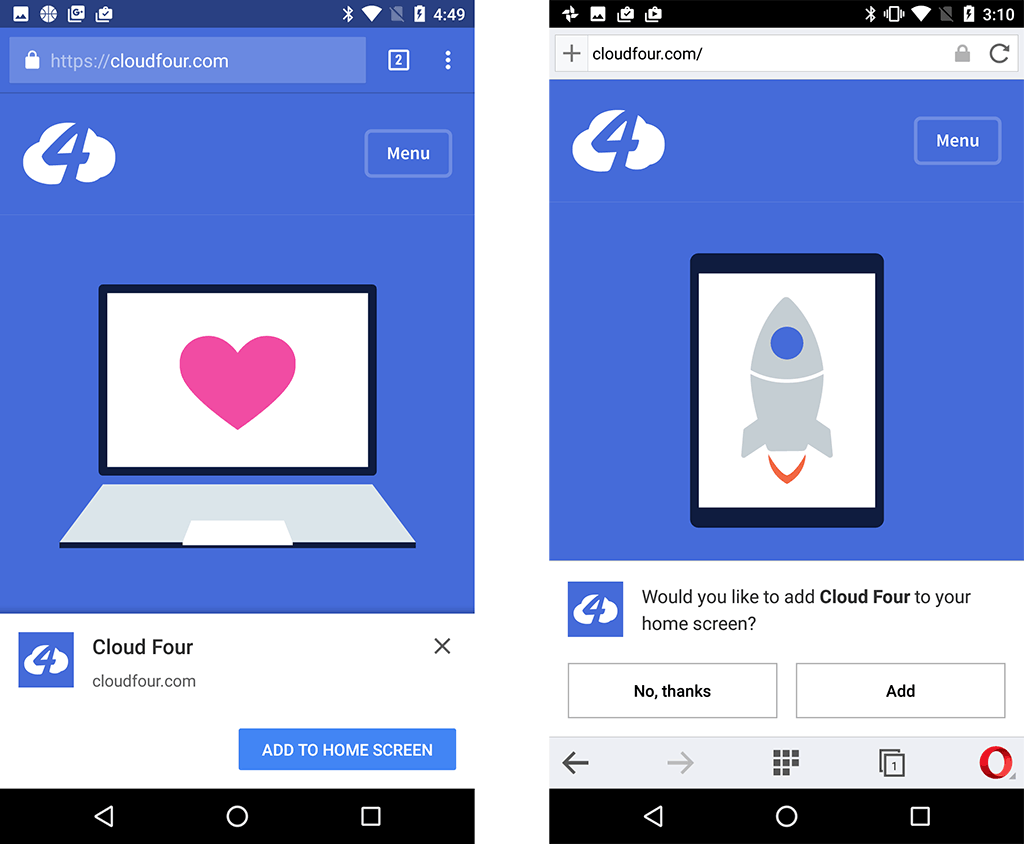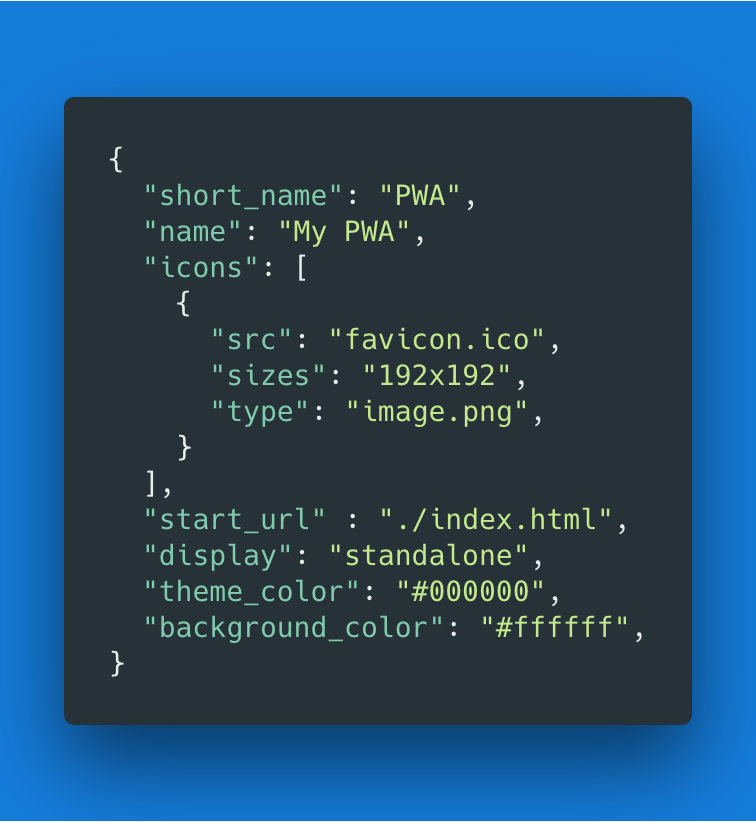In recent years we’ve seen a number of major shifts in the online experience, mostly coming from the proliferation of mobile devices. The evolution of the Web has taken us from single versions of a website, to desktop versus mobile versions, to responsive sites that adapt according to screen size, then to native mobile apps, which either recreate the desktop experience as a native app, or act as a gateway to the responsive version.
The latest iteration of all of this is the progressive web app (PWA). A PWA is a software platform that aims to combine the best of both the Web and the native experience for website/app users.
In this article on CSS and PWAs, we’re going to discuss a number of techniques that can be used when creating the CSS required for the development of PWAs.
What are PWAs?
There are three main features of a PWA. As you’ll see, what makes a web app progressive is the “fixing” of problems typically associated with web apps, by adopting some of the techniques used by native apps to resolve these issues.
-
Reliable. A PWA should reliably load like a native app (no matter the state of the network). This is contrary to a web page, which typically does not load if the device is disconnected from the network.
-
Fast. The performance of a PWA should be independent of such things as geography, network speed, load or other factors that are beyond the control of the end user.
-
Engaging. PWAs should mimic the native app’s immersive, full-screen experience without requiring the need of an app store, even supporting such features as push notifications.

There are other features PWA features, but for now, we’ll keep to the most important ones described above.
Google has been at the forefront of pushing these kind of apps, but the adoption of PWAs has been picking up with vendors and plenty of other companies on the Web helping the adoption and embracing the concept of PWAs.
The following are comments from Itai Sadan, CEO of Duda, who was present at Cloudfest 2018:
Progressive web apps represent the next great leap in the evolution of web design and online presence management … they take the best aspects of native apps, such as a feature-rich experience and the ability to be accessed offline, and incorporate them into responsive websites. This creates an incredible web experience for users without the need to download anything onto their device.
Anyone providing web design services to clients is going to want to offer PWAs because over time, just like with mobile and responsive web design, it will become the industry standard.
What is Required for Developing PWAs?
Developing a PWA is not different from developing a standard web application, and it may be possible to upgrade your existing codebase. Note that for deployment, HTTPS is a requirement, although you can do testing on the localhost. The requirements for an app to become a PWA are discussed below.
1. Create a Manifest File
PWAs must be available to install directly via a website which has been visited, meaning there’s no need for a third-party app store to get the app installed.
To enable this, the app needs to provide a manifest.json file — a JSON file that allows the developer to control how the PWA appears, what needs to be launched and other parameters.
A typical manifest file appears below. As we can see, the properties are setting a number of look-and-feel settings that will be used on the home screen of the device where the app will be installed.

The styling of the PWA starts from the manifest file, but there’s no real CSS involved in this part. It’s just straight up properties, which define the application’s name, icons, primary colors, etc.
2. Using a Service Worker
A service worker is essentially a specific type of web worker, implemented as a JavaScript file that runs independently of the browser — such that it’s able to intercept network requests, caching or retrieving resources from the cache, and delivering push messages as necessary.
The service worker is what makes the PWA truly offline capable.
3. Install the Site Assets, Including CSS
The first time the Service worker is registered, an install event is triggered. This is where all of the site assets are installed, including any CSS, JS and other media and resource files required by the application:
self.addEventListener('install', function(e) {
e.waitUntil(
caches.open('airhorner').then(function(cache)
{
return cache.addAll([
'/',
'/index.html',
'/index.html?homescreen=1',
'/?homescreen=1',
'/styles/main.css',
'/scripts/main.min.js',
'/sounds/airhorn.mp3'
]);
})
);
});
Developing PWAs is not very different from developing web apps, as long as the fundamental requirements have been met.
This is where the CSS starts to get involved, with the files defined that will be used to style the progressive web app.
The post CSS and PWAs: Some Tips for Building Progressive Web Apps appeared first on SitePoint.
No comments:
Post a Comment